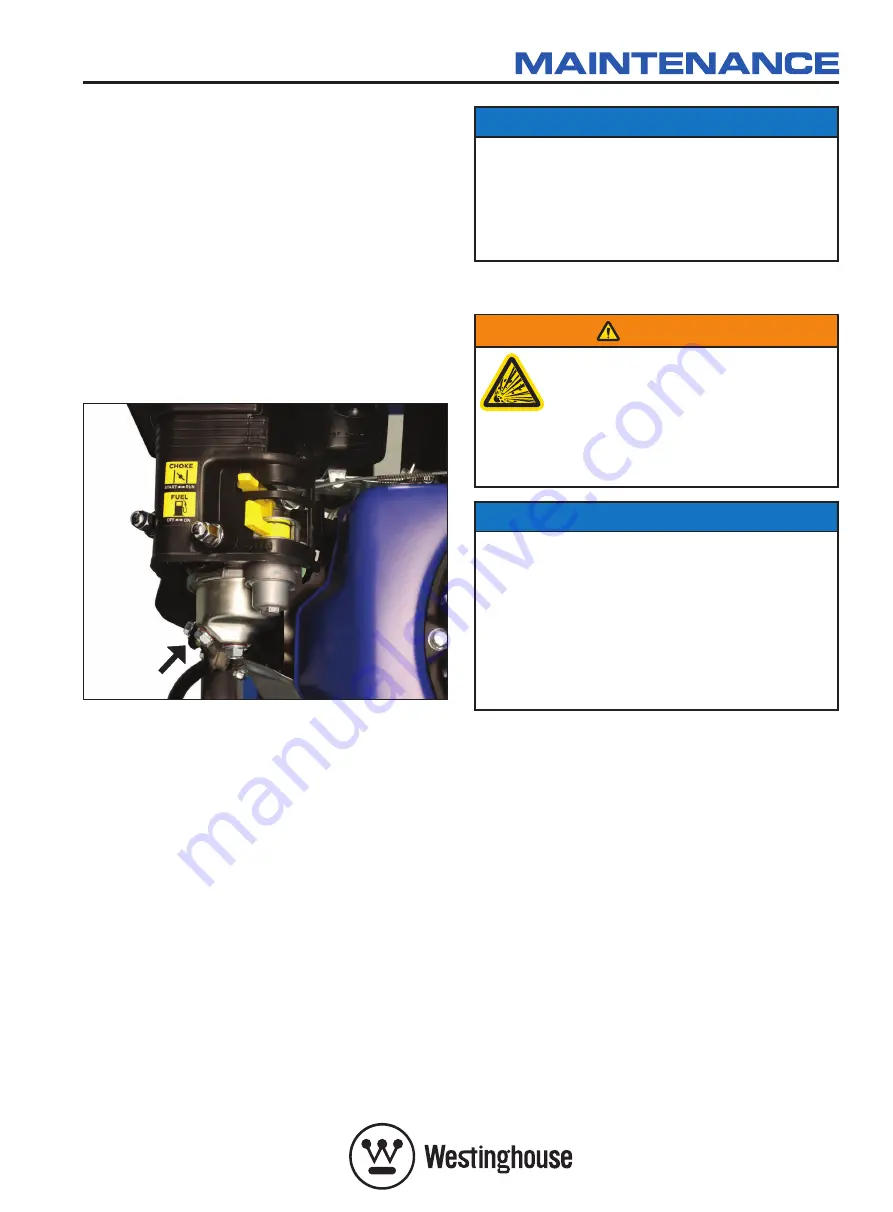
31
DRAINING THE FUEL
Occasionally it may be necessary to drain all of the
fuel out of the pressure washer. For example, to
remove contaminated or stale fuel or to prepare the
pressure washer for transport or storage.
Tools required
–
10 mm spanner, funnel and fuel
storage container
.
1. Move the fuel valve lever to the
ON
position
.
2. Loosen the fuel tank cap, but leave it in situ
covering the fuel tank filler opening for safety
.
3. Position the funnel and fuel storage container
under the carburettor drain screw and then
remove the screw by turning it anti-clockwise with
the spanner as shown in Figure 47.
4. Carefully drain the fuel into the storage container.
Take care to wipe up any spills immediately.
5. When all of the fuel has been drained out, re-
install the carburettor drain screw by turning it
clockwise by hand first, and then finish tightening
it with the spanner. Move the funnel, storage
container and any fuel soaked rags away from the
pressure washer. It is preferable to consume the
fuel in another engine-powered device straight
away or dispose of it properly rather than storing it
for a long time with fuel stabiliser for later re-use.
6. Move the fuel valve lever to the
OFF
position and
then clean the fuel sediment cup
.
7. Tighten the fuel tank cap closed.
NOTICE
Never dispose of fuel or fuel contaminants by
dumping either of them into a sewer, on the ground,
or into groundwater or waterways. Always be
environmentally responsible. Follow the guidelines
of the government agencies for proper disposal of
hazardous materials. Consult local authorities or
reclamation facility.
LONG-TERM STORAGE
WARNING
Never store a pressure washer with
fuel in the tank indoors or in a poorly
ventilated area where the fumes can
come into contact with an ignition
source such as: a pilot light of a stove,
water heater, clothes dryer or any
other gas appliance, or a spark from
an electric appliance.
NOTICE
Fuel stored for as little as 30 days can go bad,
causing gum, varnish and corrosive build-up in fuel
lines, fuel passages and the engine. This corrosive
build-up restricts the flow of fuel, preventing an
engine from starting after a prolonged period of
storage.
Some of the most commonly experienced faults
with pressure washers are directly attributable
to stale fuel. Such faults are not covered by the
pressure washer’s warranty.
The pressure washer should ideally be run at least
once per month. If this is not possible, the pressure
washer should be prepared for long-term storage as
described hereunder.
Proper care should be taken to prepare the pressure
washer for any long-term storage. This will protect the
pressure washer’s function and appearance, and will
make it easier to start when next required.
Storage Procedure for 1 – 3 Months
1. Add a proprietary fuel stabiliser to the fuel
tank and then add fresh fuel up to the tank’s
maximum capacity. Follow the manufacturer’s
recommendation for correct ratio of stabiliser to
fuel.
2. Carry out any necessary scheduled maintenance
or repairs.
3. Follow the procedure described in After Each Use.
Figure 47 – Removing the Carburettor Drain Screw














































